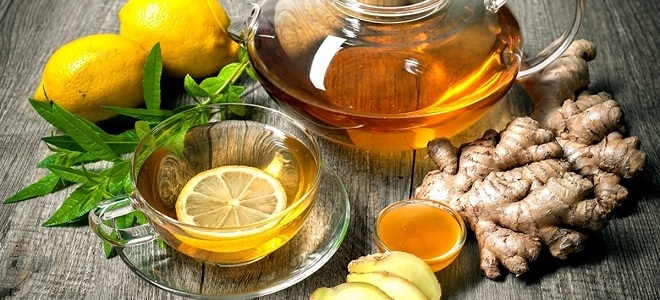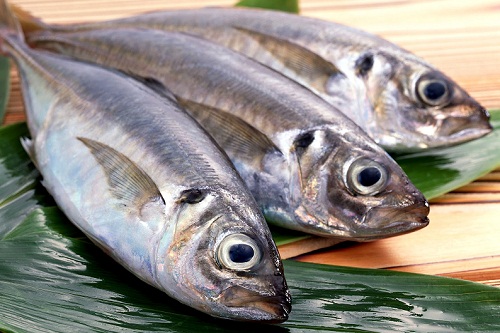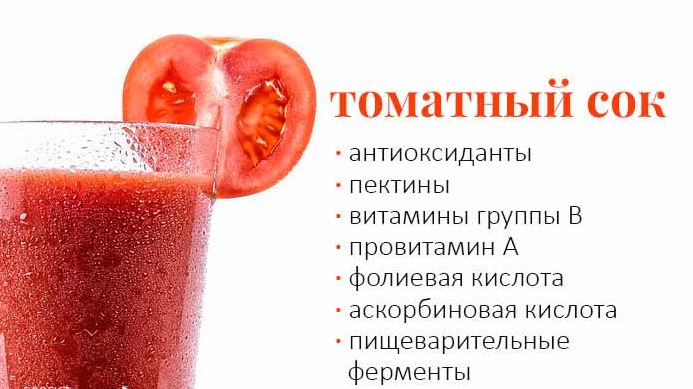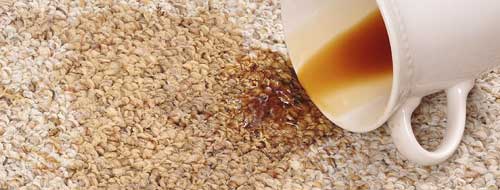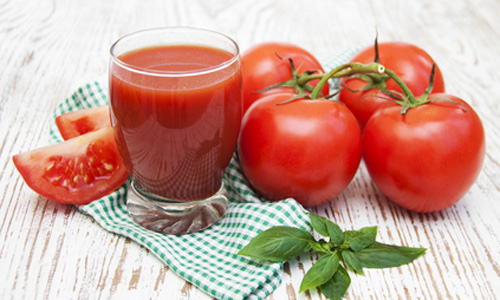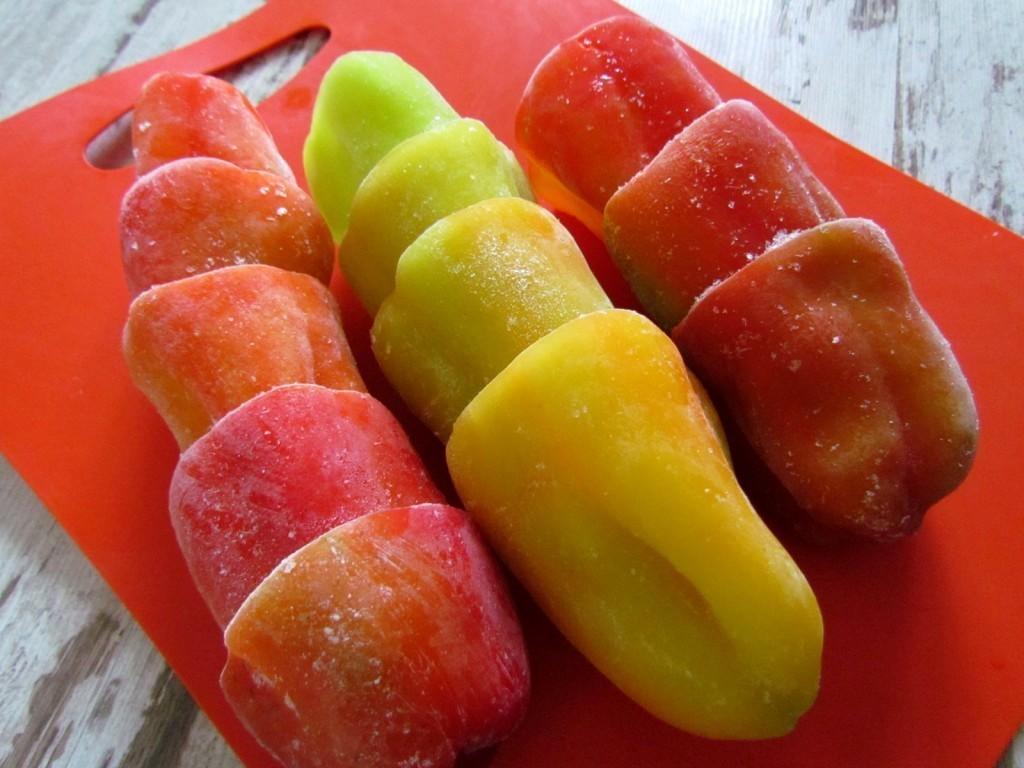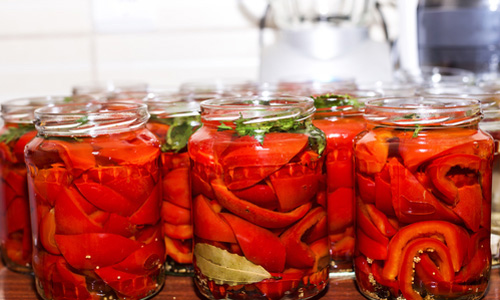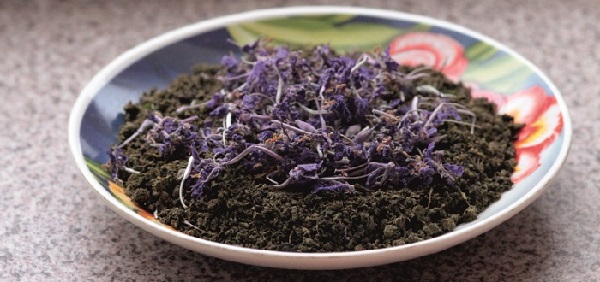Useful properties of mangosteen fruit, contraindications, the use of syrup (concentrate) for weight loss. Mangosteen fruit - beneficial properties
Residents of our country first heard about mangosteen in the popular film “Guest from the Future,” when Alice shared a recipe for an ordinary “bramblet” with her friend Julia. True, according to her recipe, mangosteen needed to be fried. It turns out that mangosteen is not an invention of Cyrus Bulychev, but a completely existing fruit, but it is not fried, but eaten raw, since it is a sweet and sour fruit.
The tropical fruit mangosteen (mangosteen, garcinia) in Southeast Asia - the birthplace of these fruits, is very popular and widespread. According to a Buddhist legend, Buddha was the first to find this fruit and give it to people, therefore it is called the “king of fruits”. According to another version, Queen Victoria was very fond of mangosteen, so they are also called the “Queen of Fruits”.
Where and how it grows
Garcinia grow in India, Vietnam, Thailand, Indonesia, Philippines, Malaysia. From these countries, fruit trees came to Africa and America.
Mangosteen grows on tall 20-25 meter evergreen trees. Trees have large oval leaves with a dark green top and a yellowish bottom. Young leaves appearing on the tree are painted in an unusual pink color. The flowers have fleshy green petals with red spots.
The fruits are similar to dark purple in color, under the dense skin of which there are from 4 to 8 juicy segments with seeds, which look like a head. For the appearance of fruits, flowers do not require pollination - they are pollinated by parthenogenesis (self-fertilization). Fruits ripen twice a year: in the summer and in the winter.
Mangosteen trees begin to bear fruit late - not earlier than the tenth year of life, but yield yields up to 25-40 years of their life.
Chemical composition
Mangosteen contains a lot (up to 18 g), while up to 1.8 g of dietary fiber (s). The content of other nutrients in the pulp of the garcinia fruit is small: - up to 0.4 g and - up to 0.6 g. 100 g of edible pulp is up to 73 kcal.
The fruits of garcinia contain a record among all plants the number of xanthones - polyphenolic compounds, which are powerful. For comparison: only one xanton is contained in aloe juice, 3 in a golden mustache, and 43 in the pulp of mangosteen.
The vitamin-mineral complex of mangosteen is diverse, but there is no predominance of any of the vitamin or mineral over others.
| Name | Content in 100 g of pulp, milligrams |
|---|---|
| 0,016 | |
| 0,054 | |
| 0,054 | |
| 0,032 | |
| 0,018 | |
| 0,031 | |
| 0,29 | |
| 2,9 | |
| 200,0-230,0 | |
| 8,0-12,0 | |
| 8,0 | |
| 13,0 | |
| 7,0 | |
| 0,1 | |
| 0,3-0,8 | |
| 0,2 | |
| 0,1 |
In addition to pulp, many useful substances are also found in the inedible peel of fruits and bark. Xanthones are also extracted from the peel. An extract from the bark, which was called "amibiazine", was used as an anti-amoebic agent. From whole fruits produce a general tonic - Xango juice.
Beneficial features
 Garcinia fruit fiber improves intestinal motility, inhibiting constipation, and also absorbs toxic substances dissolved in it. Due to this, fruits have a diuretic and detoxification effect.
Garcinia fruit fiber improves intestinal motility, inhibiting constipation, and also absorbs toxic substances dissolved in it. Due to this, fruits have a diuretic and detoxification effect.
A significant content in mangosteen contributes to the normal functioning of the intestinal microflora, thereby increasing immunity.
Copper, zinc and phosphorus contained in the pulp of mangosteen:
- participate in the synthesis of hemoglobin;
- promote the transition of immature reticulocytes to mature red blood cells;
- normalize the acidity of the biological environment of the body, since they participate in redox reactions in the composition;
- take part in the construction and regeneration of bone tissue;
- enhance the hypoglycemic effect of insulin;
- prevent the breakdown of glycogen in the liver;
- increase the activity of pituitary hormones;
- contribute to the antitoxic function of the liver.
Potassium is involved in the regulation of intracellular pressure and stimulates the excretion of excess fluid from the body. Together with calcium, potassium regulates the tone of striated muscles, improves nerve conduction, activates a number of enzymes in the human body.
Manganese mangosteen enhances the hypoglycemic effect of insulin, reduces blood concentration, increases the body's defenses, has a beneficial effect on digestion.
Mangosteen in its homeland is famous for its anti-aging effect, the ability to improve digestion and contribute to weight loss. They normalize the hormonal background.
The benefits of xanthones
 Due to the high content of xanthones, the fruits of garcinia are an excellent antioxidant. Xanthones of mangosteen:
Due to the high content of xanthones, the fruits of garcinia are an excellent antioxidant. Xanthones of mangosteen:
- prevent damage to cell walls and intracellular structures by free radicals;
- inhibit the growth of pathogenic microorganisms (bacteria, viruses and fungi);
- improve microcirculation in tissues;
- increase immunity and vitality of the body;
- help to reduce joint pain;
- reduce skin itching and other allergic manifestations;
- increase skin elasticity;
- normalize metabolic processes in the body;
- lower blood levels.
Xanthones prevent the occurrence of chromosomal mutations in the genome of cells of the human body, as a result of which they have an anticancer effect. Large-scale clinical studies conducted by the Sloan-Kettering Cancer Memorial Cancer Center at New York City revealed that regular consumption of mangosteen fruits, due to the presence of a large number of xanthones in them, triggers the self-destruction of cancer cells.
Thanks to xanthones, these fruits relieve inflammation. Having tropism for connective tissue, these compounds are able to reduce the pain that occurs with arthritis, arthrosis, sprains.
Means from the peel of mangosteen have an antidiarrheal effect. Garcinia tree bark extracts are used as an anti-amoebiasis agent.
Harmful properties
It is scientifically proven that some xanthones of mangosteen are able to worsen the process of blood coagulation, therefore, these fruits are contraindicated in:
- thrombocytopenia;
- deficiency of blood coagulation factors;
- hemophilia;
- bleeding.
 With caution, they should be eaten by women during pregnancy and menstrual bleeding. It is forbidden to use mangosteen and blood thinners at the same time, for example, aspirin.
With caution, they should be eaten by women during pregnancy and menstrual bleeding. It is forbidden to use mangosteen and blood thinners at the same time, for example, aspirin.
In some people, these fruits can reduce the reaction rate, so it is better not to use them before working with complex mechanisms or driving a car.
Medical use
In the off-season, mangosteen is expensive, and the amount of nutrients in them during storage decreases sharply. Therefore, it is recommended to eat them for medicinal purposes during the harvest period of these fruits. Oriental medicine appreciated the beneficial properties of juicy mangosteen fruits.
With diseases of the digestive system
Garcinia fruits are used in the treatment of:
- diseases of the oral cavity (gingivitis, stomatitis);
- inflammatory diseases of the digestive system (gastritis, enteritis, pancreatitis, hepatitis);
- stomach ulcers;
- intestinal dysbiosis;
- intestinal infections (dysentery, amoebiasis, candidiasis);
- helminthic infestations;
- hemorrhoids.
Eating 2-3 fruits helps relieve spastic abdominal pain.
With diseases of the genitourinary system
 The use of mangosteen in food is indicated for various diseases of the urinary and reproductive systems:
The use of mangosteen in food is indicated for various diseases of the urinary and reproductive systems:
- urolithiasis;
- urethritis;
- cystitis;
- gonorrhea;
- prostate;
- menstrual irregularities;
- premenstrual syndrome.
They help to remove excess fluid from the body.
In case of metabolic disorders and endocrine system
The rich chemical composition of garcinia allows its fruits to be used for:
- diabetes mellitus;
- overweight;
- hormonal disorders;
- gout.
Increased immunity with prolonged and regular use of mangosteen normalizes metabolism and improves the body's resistance to various infections. In the literature there is information about the benefits of mangosteen for tick-borne borreliosis (Lyme disease) and febrile conditions.
For brain disorders
The use of these exotic fruits is also useful for disorders of the nervous system:
- alzheimer's disease;
- transient cerebrovascular accident;
- neuralgia;
- apathy;
- depression
- migraines
- glaucoma.
Minerals and B vitamins of mangosteen have a beneficial effect on the functioning of the brain in stressful situations. They are used by students during exams to improve brain activity.
With pathologies of the circulatory system
 The rich vitamin and mineral composition and the content of a large number of xanthones allow the use of mangosteen for the treatment of:
The rich vitamin and mineral composition and the content of a large number of xanthones allow the use of mangosteen for the treatment of:
- hypertension
- atherosclerosis;
- coronary heart disease;
- arrhythmias;
- varicose veins;
- thrombophlebitis;
- anemia.
For diseases of the skin and connective tissue
Due to the anti-inflammatory properties of xanthones, mangosteen helps well with dermatological pathologies and inflammatory diseases of the connective tissue:
- burns;
- acne;
- eczema
- acne
- seborrhea;
- dandruff;
- dermatitis;
- allergies
- osteochondrosis;
- arthritis;
- arthrosis.
At the same time, the fruits of garcinia show their positive properties not only when they are used inside their pulp, but also when applied externally to products made from whole fruits or their peels.
Mangosteen is recommended for use by patients with oncological diseases of any localization. Fruits can not replace the main anti-cancer treatment, but with their help it is possible to strengthen the immune system, accelerate recovery after treatment.
How to choose and store
 Mangosteen is a perishable fruit. They are stored in the refrigerator for no longer than two weeks. Due to the difficulties of transportation, in our country the fruits of garcinia can be purchased only in supermarkets or in the markets of large cities. To buy ripe and healthy mangosteen, you need to know some of the nuances of their choice:
Mangosteen is a perishable fruit. They are stored in the refrigerator for no longer than two weeks. Due to the difficulties of transportation, in our country the fruits of garcinia can be purchased only in supermarkets or in the markets of large cities. To buy ripe and healthy mangosteen, you need to know some of the nuances of their choice:
- You need to buy them only in the season of their collection - in summer and winter. In spring and autumn, as a rule, substandard fruits are sold, in which few useful substances are stored.
- The color of the ripe fruit is dark purple, similar to the color of the peel. A lighter color of the fruit indicates their immaturity, and a dark color or spots on the peel indicate overripeness.
- To the touch, mangosteen should be dense, resilient, but not hard.
- The peel of ripe fruit is smooth and whole. If the peel on them is wrinkled or cracked, you can’t buy such mangosteen - they are spoiled.
Cooking Application
Mangosteen is most often consumed raw or in the form of juice. The pulp of fruits in Asia is used to make jam and jams, added to fruit salads, cocktails, smoothies, soufflés, ice cream. Thais like to serve mangosteen to the table on an ice pillow.
The sweet and sour taste of fruit goes well with fish and seafood (,). From it often prepare hot sauces for meat and fish dishes.
conclusions
The exotic fruit mangosteen is called the “king of fruits”. This name provided him with a unique chemical composition. 43 types of xanthones were found in the pulp of fruits - substances with pronounced antioxidant properties, fiber, vitamins, and. These fruits have many useful properties that are successfully used by traditional healers in the treatment of various diseases.
Mangosteen is recommended for use in diseases of the heart and blood vessels, digestive organs, inflammatory diseases of the skin and connective tissue. They help with neurological pathologies, diabetes mellitus, endocrine disorders. Low calorie content allows you to consume the fruits of garcinia in a diet.
The anticancer property of mangosteen xanthones has been scientifically proven, therefore these fruits are often included by oncologists in therapeutic diets for tumors of various localization.
The sweet and sour taste of mangosteen was enjoyed by many of our consumers, so they are becoming increasingly popular in our country.
With caution, it is necessary to use mangosteen with reduced blood coagulation and at the same time with blood thinners.
In 1980, Queen Victoria of England heard rumors from the East Indies about an unearthly fruit. The catch was only that the fruit quickly deteriorates and it cannot be transported. The queen promised a knighthood to the one who will deliver her an outlandish product ... Whether Victoria received the desired story is not reported, but since then the mangosteen has been bearing the magnificent title “Queen of Fruits”.
History and distribution
Mangosteen is called differently: mangosteen, mongoose. Species Mangosteen belongs to the genus Garcinia. Surprisingly, his relative is a St. John's wort. According to the USDA, the fruit contains 11 vitamins and 7 micronutrients, and is also valued for its palatability.
Southeast Asia is considered the birthplace of mangosteen. This is a natural hybrid of Garcinius Malaxensis and Hombronian.
Thanks to the vaccination of Garcinia Mangosteen on Hombronian, the onset of the fruiting period was reduced by 2 times (from 20-25 to 6-10 years). This allowed it to be cultivated throughout South Asia and Central America, as well as in Hawaii and California.
What does it look like
Mangosteen is a tree up to 25 meters high. The leaves are striking with a variety of shades: yellow-green, and the young leaves are pink.
Evergreen tree with fruits reaches 25 m in height
The fruits are comparable to a round eggplant of dark violet color with a diameter of up to 8 cm. The thickness of the brown-purple peel reaches 1 cm. Under it is a white flesh that resembles a peeled head of garlic. It is divided into 4-8 segments with seeds up to 2.5 cm inside. The consistency is soft, cream, sweet and sour.
The taste is refreshing, a cross between nectarine, pineapple. It has a bright, pleasant aroma.
The main crop of mangosteen is harvested from May to September. A tree can produce up to 2 crops per year of 70-180 kg.
Beneficial features
Tree bark contains milky sap - latex. It is used in the manufacture of black dye. Beautiful dark wood goes to the manufacture of furniture and crafts.
Chewing sticks are made from small twigs - natural brushes and toothpicks.
Oil for creams and lotions with a moisturizing effect is extracted from the seeds.
The mangosteen plant contains 43 species of xanthones - strong antioxidants. It is about ¼ of all species and more than in any other plant. Properties of xanthones:
- in terms of antioxidant properties, they are more effective than C and E, fight free radicals and ultimately give a rejuvenating effect;
- can cause death of cancer cells;
- possess an antibacterial effect: the benefit has been proved in the complex treatment of tuberculosis, salmonella and getting rid of the causative agent of gastric ulcer - Helicobacter pylori.
- The discovered analogue of aspirin GM1 has an analgesic and antipyretic effect.
There are more xanthons in the peel of the fruit than in the pulp.
 The white wedges inside the mangosteen are very similar to garlic
The white wedges inside the mangosteen are very similar to garlic Currently, creams are produced from fruits that slow down the aging process of the skin, lotions for wrinkles, and shampoos. Aromatic soap is brewed, medical toothpaste is made.
Nutrition and Value
This exot is a valuable source of fiber.
These exotic fruits are best eaten after a meal. So they are more embedded in metabolic processes and contribute to the elimination of fat accumulation.
 For weight loss, it is convenient to use fruit powder, it can be added when cooking any dishes: salads, cereals and soups
For weight loss, it is convenient to use fruit powder, it can be added when cooking any dishes: salads, cereals and soups Vitamin and mineral composition
Data on the exact quantitative composition vary.
Mangosteen is rich in calcium and phosphorus. The most significant content of vitamin PP. It eliminates the manifestations of pellagra disease: dementia (baldness), diathesis and diarrhea.
How to choose
Choose the largest fruits - they contain more delicious pulp.
The ripe fruit is large and elastic to the touch, the peel does not crack and there is no dent when pressed. Chips are necessarily fragrant and without signs of mold. A pleasant smell indicates a good quality product.
 Both Gogol and Goncharov mentioned in their work about mangosteen
Both Gogol and Goncharov mentioned in their work about mangosteen How to store
Mangosteen fully ripens on a tree. Shelf life of fresh fruit in a warm, dry place no more than 25 days. In Russia, due to transportation, it is better to store in the refrigerator at + 3 + 5 ° C for 1-2 weeks.
How to eat
Wash first under running water. Mangosteen is carefully cut with circular motions, trying not to touch the flesh. The peel is removed.
Juice from the peel of mangosteen is very poorly washed and washed.
Eat mangosteen raw with a spoon. Seeds spit out due to bitterness. And you can experiment:
- make salads;
- peeled juice or tea;
- add to baking and filling for pies;
- cook the sauce with fish or jam.
But with heat treatment, the taste is lost after 10 minutes, and vitamins are almost halved after 15 minutes.
Mangosteen Salad
A salad with mangosteen will require 15 minutes of free time and some useful ingredients.

Chinese cabbage and rosemary must be fresh. White onion is best for this salad.
Cooking Instructions:
- Mix sesame oil with mangosteen juice.
- Finely chop the rosemary.
- Chop vegetables and salt.
- Garnish the finished salad with mangosteen cubes and sprinkle with sesame seeds.
The aromas of rosemary and mangosteen are surprisingly combined, and the fresh taste will invigorate and delight with saturation.
Where to buy, price
The cheapest fruit can be purchased in the local markets of Thailand, Malaysia, China, India during the period of mass collection of mangosteen (June-July). With successful trading, prices are discounted from 220 to 50-80 rubles. per kg
In Russia, fruits are bought in large shopping centers or on sites. When ordering online, you must consider the cost of delivery.
| Product | What to look for | Price range, rub. |
| Fresh 250 g (4-5 pcs.) | Must be resilient, there is no dent when pressed | 430-650 |
| Recommended brewed fruits | more often offered in China | 280-700 |
| Juices and juice drinks (XanGO juice brand) | The content of the juice itself should be at least 25%, not for diabetes, sudden pressure surges | 109,9-9000 |
| Teas containing mangosteen 75 g | It is desirable that there was no flavoring, but pieces of mangosteen | 138-250 |
| Sauces for fried dishes, dumplings, rolls, pancakes, 150 ml | Not less than 34% mangosteen pulp | 270-300 |
| Fruits in syrup (68% peeled mangosteen) 545-600g | Pay attention to the amount of sugar and calorie content of the product. | 440-600 |
Now popular cosmetics under the guise of those made in Thailand and India. These are all kinds of shower gels, bath foams, massage oils, creams, lotions, masks, scrubs, toothpastes, soaps.
 Mask for the face
Mask for the face When choosing any of the products pay attention to the content of the main component and place of production. It is better if the place of manufacture is where the fruits themselves are grown: India, Sri Lanka, Thailand, China.
Do not use if prone to allergic reactions. This can cause itching and redness of the skin, rash, mild pain in the joints.
Mangosteen fruit contains more than 26 nutrients, and its calorie content is not more than 73 kcal per 100 grams. Due to these qualities, the fruit is recommended for diet with weight loss, as well as a vegetarian table.
The exotic fruit mangosteen, also known as mangosteen or mangosteen (lat. Garcinia mangostana), belongs to the plants of the genus Garcinia. Distributed in Indonesia and Malaysia. Today, it is also cultivated in parts of Southeast and South Asia, and exported worldwide.
The fruits of mangosteen are dark purple in the shape of a ball. The peel is quite stiff, about 5-10 mm thick. The pulp is white, soft, fleshy and juicy, divided into 4-8 slices, it resembles an orange to taste. There are bones inside.
An interesting fact: this fruit was Queen Victoria's favorite treat, so it is sometimes called the “king among fruits”.
Scope of application
Fresh fruits are consumed raw. This is a delicious dessert, which is on the menu of every self-respecting Thai restaurant. And in Malaysia, delicious jam is made from the pulp of mangosteen.
You can find canned or frozen fruits on sale. Although they lose their unique flavor during processing, this is a fee for a long shelf life.
Twigs are used as ruminant sticks in Ghana (in West Africa). They make furniture from beautiful dark brown wood. The peel of the fruit contains black dye, which is used in China for tanning the skin.
Various parts of the plant are used in traditional medicine recipes in Southeast Asia.
The nutritional value
It is a rich source of fiber, vitamin A, vitamin C, iron, potassium and calcium. The peel contains phytonutrients and biologically active chemicals that are good for your health.
Mangosteen has antioxidant, anti-inflammatory, anti-allergic and antiviral properties. It contains about 60 xanthones (a record number) - natural phenolic compounds with a wide range of beneficial properties.
The peel is rich in pectin, and the seeds are rich in fatty acids, vitamin C and phytonutrients.
Health Benefits of Mangosteen
Read the article: Useful properties of persimmon.
Harmful mangosteen in detail
According to scientific evidence, xanthones affect blood coagulation. Therefore, doctors do not recommend eating mangosteen to people taking blood-thinning medications.
Allergic reactions are also possible.
There is no consensus on the use of mangosteen during pregnancy. You should consult your healthcare provider.
Where to buy and how to choose?
These fruits can be found in large grocery stores. Pay attention to the supplier: the delicacy should be from China, Thailand or other countries of Southeast Asia. You can order a delicacy on the Internet.
Choose fruits with a large number of leaflets crowning the top. As a rule, they are more juicy and contain fewer seeds.
How to eat mangosteen?
Wash the fruit under running water. Use a sharp knife to make an incision on the skin around the circumference. The notch should be deep enough, as the skin thickness is about 7-10 mm. Inside you will find a white pulp in the form of slices, like cloves of garlic. Juicy slices can be easily removed from the peel with a spoon.
Get acquainted with another exotic fruit that you can eat with a spoon - lychee.
Sweet and sour jam
- 200 g of fruit pulp,
- 70 g sugar
- 70 g of water
- 2 tbsp. l lime juice
- 1 tbsp. l pectin.
Cook sugar syrup from sugar and water. Add syrup to the fruit pulp and cook until soft. Then add 2 tbsp. lime juice and 1 tbsp. l pectin for gelling. Stew until the jam thickens.
Store the jam in a sealed container.
Cocktail
- 250 g mangosteen puree,
- 100 g liquid cream
- 1 cup of water.
Mix all the ingredients in a blender, add sugar to taste.
If you like to discover new healthy foods, pay attention to mangosteen. Even if you don’t like the taste, no one will take the joy of new experiences from you.
Mangosteen is an exotic fruit, whose homeland is the countries of Southeast Asia, where it is recognized as the king of fruits. Many residents of the CIS countries are familiar with fruit from trips to Thailand. This curiosity can be found on sale with us. However, given the cost of delivery, this product is not a cheap pleasure. Due to the beneficial properties of the mangosteen fruit, every year it becomes more and more popular.
Description
Before exploring the mangosteen fruit, the beneficial properties and the dangers of this product, let's find out how it looks from the outside and from the inside.
Outwardly, the mangosteen looks like an apple, covered with a thick purple-burgundy peel, which is not suitable for use in food. Under it is a juicy edible pulp of white color in the form of cloves resembling garlic. Inside the pulp you can find seeds closely adjacent to it.
Mangosteen has a light aroma and sweet and sour taste, which can be described as a combination of pineapple, citrus, strawberries, grapes, peach and apricot. The pulp of the fruit is so juicy that it directly melts in the mouth, it perfectly quenches thirst. In addition to the divine taste, mangosteen (fruit) also has useful properties (the photo of the fruit can be seen below).
Composition
Why is mangosteen so good? Fruit, the beneficial properties of which are determined by its most valuable chemical composition, has healing qualities.
First of all, mangosteen is a real storehouse of xanthones - the most powerful natural antioxidants, of which 39 out of 200 exist in nature. Xanthones are known for their ability to destroy free radicals, maintain a healthy weight, improve the body's defenses and rejuvenate it. In addition, they help improve brain activity and have a positive effect on the cardiovascular system. Their effect on the human body occurs at the cellular level. Scientists have discovered that xanthones have the property of leading to self-destruction of malignant cells.
The peel of an exotic fruit contains as many catechins as it does in green tea. These substances are known for their antimicrobial, immunomodulatory and antitumor effects.
Fruit mangosteen has beneficial properties due to the presence in a number of vitamins. The vitamin complex is represented by vitamins A, B (thiamine, riboflavin, niacin, pyridoxine, pantothenic and folic acid), C, E and D.
What else is valuable about mangosteen fruit? The beneficial properties of the fruit are ensured by the presence of such macro- and microelements as potassium, magnesium, calcium, zinc, iron, phosphorus, manganese, etc.
The calorie content of the fruit does not exceed 72 kcal per 100 grams.
Benefit
What are the beneficial properties of mangosteen fruit?
Regular intake of this exotic fruit allows you to maintain the cardiovascular system in the right rhythm, stop headaches and get rid of insomnia.
The mangosteen fruit (its beneficial properties are still the subject of study) normalizes metabolic and digestive processes. For this reason, many nutritionists in their practice often use the fruits of mangosteen as a fat-burning agent. In addition, it is effectively used for diarrhea.
Mangosteen helps to improve the functioning of the endocrine system and establish a hormonal background.
Tropical fruit juice helps recover faster after surgery, serious illness, and depression. Thanks to its use, it is possible to rejuvenate and cleanse the body, as well as increase its vitality.
Mangosteen and weight loss
During the diet, experts recommend eating foods that are high in fiber and antioxidants. Such nutrition helps maintain the necessary level of vitamins in the body and feel good. It is for this reason that mangosteen fruit will come in handy. The beneficial properties of this fruit allow not only to fill up the deficiency of vitamins and microelements, but also to accelerate the metabolism and strengthen the immune system.
An important role in losing weight is also played by a purely psychological aspect, when taking mangosteen allows you to make the diet menu more tasty and varied. This makes it possible not to break with a fairly strict diet.
Contraindications
If you study mangosteen (fruit), the beneficial properties and harms of this fruit, you will find that it, like all exotic foods, can cause allergic reactions. Therefore, fruits should be taken with caution in people prone to fruit allergies.
During pregnancy, its admission is allowed if it was present in the diet earlier and was safely tolerated.
Application in traditional medicine
It is worth noting that mangosteen is not only useful for pulp. In traditional medicine of Asia, the dried peel of an exotic fruit is successfully used. Various ointments, creams, which are used to treat dermatological diseases, are made from milled powder. Means on the basis of mangosteen peel treat both a common skin rash and severe forms of eczema. Antibacterial creams for the legs, as well as for the care of problem skin, have a good effect.
As an astringent, mangosteen peel powder is used for diarrhea and dysentery.
How to choose the right fruit
When choosing a mangosteen, you should pay attention to the color of the leaves located at the top of the fetus. Their color should be bright green, not brown. The brown color of the leaves suggests that the fruit is overripe and begins to deteriorate.
A sign of ripe mangosteen is its elasticity. When pressed, the fetus should spring, and not be hard, like a watermelon peel. A unique feature of the fruit is that if it begins to rot, it is completely invisible in appearance. You can check the quality of the product only by touching it and carefully inspecting the leaves.
It is better to choose larger fruits, as they contain more pulp. In addition, mangosteen with a large number of leaves - more juicy, they have fewer seeds.
How they eat
In order to enjoy the exotic, first of all, the fruit must be correctly cut. To do this, make a circular incision through the center of the mangosteen, trying not to touch the pulp, and then open it. You can also cut off the upper part of the fetus, and eat the pulp with a spoon.
The fruit is consumed, as a rule, fresh, without being subjected to heat treatment, because the aromatic and taste qualities of the product are lost due to it.
You can store it in the refrigerator. True, the shelf life, as a rule, does not exceed 7-10 days. In those countries where mangosteen grows, it is believed that the most delicious and healthy fruit that is ripened on a tree. To bring it to us, the mangosteen is ripped off immature, but this does not affect its usefulness.
What can be cooked from it
This most valuable tropical fruit is most often used for preparing exotic salads, unusual sauces for meat and fish, fruit cocktails, mousses, soufflés, syrups, as well as sweet toppings for pies.
Mangosteen, mangosteen, garcinia or mangkut are different names for an exotic fruit native to Southeast Asia. In Vietnam, Cambodia, Thailand, India, everyone knows him.
According to legend, the Buddha himself blessed and presented the people. True, Europeans call it royal for another reason.
There is a story that the English Queen Victoria loved the fruits of mangosteen so much that she promised the title to someone who could ensure the constant flow of exotics to her table.
Mangosteen - what it is and where it grows
The fruits of mangosteen are berries (from a biological point of view). The weight of one exotica is 80 ... 200 g. Each consists of white flesh melting in the mouth, seeds and a dense dark purple or purple peel, which occupies up to 2/3 of the mass.
An overgrown seedling is suitable for food. This is the pulp, which is divided into 5-8 sectors. Outwardly, they look like cloves of garlic. In large segments there are seeds. Usually in one fruit there are 3 ... 4 pieces.
What is the taste of mangosteen
The taste of fruit is considered one of the best. It is juicy, sweet, with a slight acidity. Reminiscent of the taste of lychee fruit. There are pineapple, peach, grape and strawberry notes in it.
Fresh exotics are eaten, juices and jams are prepared from them. They cannot be frozen, but canned. However, the fruit is sterilized for no more than 10 minutes, otherwise the exotic will become tasteless.
How does a mangosteen grow
The birthplace of mangosteen (Garcinia mangostana) is the Malay archipelago. Harvest twice a year from the evergreen trees of the clusian family. These include the usual St. John's wort plant.
Their common feature is milky juice, which is secreted at the fracture of branches. But exotics, unlike local relatives, are very demanding on the conditions of growth, which affects the cost.
Chemical composition
The main nutrients contained in 100 g of pulp:
- proteins - 0.5 ... 0.6 g;
- fats - 0.1 ... 0.6 g;
- carbohydrates - 14.3 ... 16.5 g;
- fiber - 5 ... 5.1 g;
- water - about 80 g.
As part of mangosteen xanthones - a special type of antioxidants. Scientists are aware of the existence of 200 xanthones. In the mangosteen, 40 of them were detected. This is more than in any other fruit. This explains its healing properties and ability to strengthen the immune system.
Vitamin Composition
It is a receptacle for niacin or vitamin PP, which is an antipellagric factor. Pellagra is a condition that occurs in a person with a lack of vitamin PP.
Manifested by diarrhea, dermatitis and dementia. Vitamin C (ascorbic acid) - 1.0 ... 2.0 mg / 100 g) and vitamin B1 (thiamine) - 0.03 mg were detected in the pulp. Other B vitamins are also present, there are vitamins A, E, D.
Mineral composition
100 g of fruit contains:
- potassium 0.2 ... 0.23 g;
- calcium 0.01 ... 8.0 mg;
- iron 0.20 ... 0.80 mg;
- phosphorus 0.02 ... 12.0 mg.
The energy value
Calorie content of pulp - 60 ... 73 kcal / 100 g. Freshly squeezed mangosteen juice has an energy value of about 75 kcal / 100 g. Calorie content of syrup, powder and extract of mangosteen depends on the technology of preparation.
Economic use of mangosteen
It is not only the fruits that matter. The benefits of mangosteen are greater. In the bark of the tree there is milky juice - orange latex, which is used in paint and varnish production. Young tree branches are used as chewing sticks. Souvenirs and carpentry are made from wood.
But the fruits remain the most valuable. They are part of the healthy Xango drink. Moreover, they are crushed in raw form, right with the peel. Before you try this exotic, find out what is useful mangosteen.
Mangosteen fruit - beneficial properties
The beneficial properties of mangosteen are associated with the chemical composition of exot. He has high antibacterial activity, and it is quite specific.
- Xanthones affect cancer cells, causing their death.
- These antioxidants have a detrimental effect on Helicobacter pylori, a bacterium that is associated with the development of stomach ulcers.
- The negative effect of xanthones on mycobacterium tuberculosis was noted.
- The action of other antioxidants is aimed at neutralizing free radicals, preventing premature cell aging.
- Beneficial effect on the cardiovascular system.
- Assists in the fight against cancer.
- With regular use, it exhibits antiviral and tonic properties. It identified an analog of aspirin called GM1.
- It normalizes metabolic processes (the preparation of mangosteen for weight loss is produced from the fruits).
What is useful mangosteen peel
The beneficial properties of mangosteen fruit are not limited to the use of pulp. The peel is rich in tannins (7 ... 13%). It is used as an astringent in tannins and for medical purposes. In South Asia, it was cut, dried and used to prepare medicinal water infusions and ointments. They were used to protect against diseases, as well as an antipyretic and analgesic.
Mangosteen contraindications
Any exotics can cause an allergic reaction. When skin rashes, redness, diarrhea, headaches, nausea occur, the fruit should be discarded.
You should not start acquaintance with exot during pregnancy or during breastfeeding. If the fruit was previously normally tolerated by a pregnant woman, it can be eaten further. In large quantities, it is contraindicated in acute diseases of the kidneys, liver, inflammation of the pancreas and gastrointestinal tract.
Contraindications mangosteen syrup
It has contraindications and mangosteen concentrate. Deception - consider it a universal tool. It is not recommended for diabetics, hypertension and hypotension, pregnant and lactating mothers.
It is contraindicated in hemophilia, as it dilutes the blood. If you are not on this list, you will be interested to know where to buy mangosteen syrup.
Mangosteen syrup - instructions for use
To try the most juicy and aromatic fruits, you have to go to South Asia. They are not stored for long - a maximum of 1 ... 2 weeks in the refrigerator. And the mangosteen, who spent several days on the road, lose their properties.
The maximum unchanged composition can be found in specially prepared concentrates. But do not think that you can buy mangosteen syrup at the pharmacy. This is not a medicine, but a dietary supplement. It can be purchased on the official website of the supplier.
Composition of mangosteen syrup
The manufacturer assures that for one can of funds 25 fruits are required. They are used with peel, because it has a lot of useful substances. Synthetic ingredients are not part of this supplement. A slimming product is used, mangosteen accelerates metabolism and helps to lose weight. Useful syrup and with a breakdown, fatigue.
- The daily norm is 1 tsp.
- Take the supplement in 2 divided doses.
- The additive is mixed with tea, kefir or yogurt.
- The interval between doses of syrup should be 12 hours.
- The course is designed for 4 weeks.
It is a dry instant drink, the mangosteen in it is contained in a freeze-dried form. It can be dissolved in water, added to cosmetic creams, scrubs. Inside, take 0.5 tsp. per day, mixing with a drink. Gradually, the dosage is increased to 2 tsp. The course of admission is a month. Then they take a week-long break, if necessary, the reception is resumed.
How to eat mangosteen
It can be eaten in kind or added to salads. It goes well with any fruit, seafood, herbs, hot pepper.
To clean it, make an incision with a knife. Mangosteen is easy to open. One part of the peel is removed, the other serves as a mini plate. Eat with a spoon.
And now the video.
Beauty and Health Health Nutrition
Where is mangosteen grown
These exotic fruits grow in the tropics and are little known in our country. But due to their amazing taste and many useful properties, they deserve attention. The birthplace of mangosteen is the Malay archipelago. It was most widely distributed in Thailand and some countries in Southeast Asia. In other countries, individual trees are found only in botanical gardens. A humid equatorial climate suits him. Mangosteen trees do not tolerate even a short period of drought or winds. And they die already at temperatures below + 5 ° C.
How to choose and eat mangosteen
The taste of mangosteen is very pleasant and simply can not be compared. Its skin is dark purple, and the flesh is white. The size of the mangosteen is small - with mandarin. This fruit has an exquisite taste and excellent nutritional properties. In addition, it is appreciated for its high xanthone content. In addition, each serving of this fruit contains five grams of fiber protein. And its dark purple pigment is used as a dye.
The pulp of mangutin is under the peel. But it should not be thrown away, because it is on this peel that the maximum amount of its nutrients is accounted for. By the way, it should be used in the preparation of juice from these fruits.
The ripe fruit should be intense in color and slightly soft. The fruits of mangosteen are removed and a little immature, they can ripen after removal. A good fruit should be firm to the touch. It is better to choose large fruits. The peel of the mangosteen should spring when pressed gently. The best season for mangosteen is the period from May to September.
It is better not to take small fruits of the mangosteen for the reason that they contain less pulp. Inside each mangosteen there are 6–7 cloves of juicy pulp. Firm to the touch and dry fruits, the peel of which is cracked, are already overripe.
In countries where this fruit grows, it is widely used fresh. Its sweet-sour refreshing taste is pleasant to all.
You can eat fresh mangosteen, you can prepare syrup from it or preserve it. When canning, carefully observe the technology. The fact is that if the sterilization process takes longer than 10 minutes, the specific delicate taste of mangosteen is almost completely lost.
Storage conditions for mangosteen
Mangosteen fruit should be stored in a closed, dry room.but it should not be cold. They can lie for 20 to 25 days. Then the peel becomes more rigid, and the flesh dries.
Unfortunately, mangosteen is sold only in tropical countries. It should ripen on a tree; stored fresh, mangosteen can be quite a short time. You can not freeze mangosteen. You can store this fruit for 1-2 weeks in the refrigerator.
The beneficial properties of mangosteen
Mangosteen helps to strengthen the cardiovascular system, helps to establish sleep and get rid of headaches, normalizes cerebral circulation, digestion and metabolism. Mangosteen improves appetite, promotes fat burning and weight loss. This fruit improves the activity of the endocrine system, helps to get rid of hormonal disorders, helps to cleanse and rejuvenate the body, increases its vitality.
What is useful mangosteen
Mangosteen is an excellent source of substances necessary for the human body, such as vitamins C and E, thiamine, nitrogen, riboflavin, magnesium, calcium, zinc, sodium and potassium.
Mangosteen is used in pharmacology. Many people know the antioxidant properties of vitamins C and E. These vitamins can very effectively fight free radicals that destroy healthy cells in the body and contribute to its early aging. But few people know about the amazing properties of xanthones. Scientists have discovered these natural chemicals not so long ago.
Their medical capabilities have been carefully studied by specialists. Their most important pharmacological properties have been identified. Xanthones effectively protect our immune system; contribute to maintaining the microbiological balance in the body; improve mental activity; help the human body to better adapt to the external environment. It is important to note that not only the flesh of mangosteen is useful, but also all its other elements. All of them are so far the only source of xanthones, which is known to science.
Free radicals are defective, positively charged molecules that lack a free electron. And they tear out this free electron from defenseless cells. The result is the loss of vitality by the cell, which leads to various negative consequences. The main reasons that free radicals appear in the body include the following: poor nutrition, stress, poor ecology, exposure to household chemicals and heavy metals, as well as smoking, drugs and alcohol abuse.
Antioxidants are negatively charged molecules that carry a free electron. These molecules can neutralize free radicals.
Kstantons are considered more powerful natural antioxidants than vitamins C and E. Xanthones are unique biological substances. There are more than 200 species of them in nature. And 39 of them contain the fruits of mangosteen. Therefore, mangosteen has the highest natural concentration of xanthones in one place.
Xanthones are able to effectively prevent mutational cell damage. They have antifungal and antibacterial effects. Inhibit inflammatory processes. In addition, American experts have revealed that xanthones can lead to self-destruction of malignant cells in the human body. Therefore, mangosteen can be called an entire pharmacy in a compact package.
In Europe and America, the beneficial properties of mangosteen were discovered not so long ago. But in the countries of Southeast Asia, this fruit has been used for hundreds of years for the prevention and treatment of various diseases. This is especially true of the peel of the fetus.
Mangosteen juice and its properties
Mangosteen also helps to fight excess weight.. According to numerous studies, this fruit helps to get rid of extra pounds. This is due to its ability to dissolve body fat.
Manufacturers recommend drinking it in order to maintain good health. This juice helps to recover faster after serious illnesses and recover after operations. There is evidence of the beneficial effects of this juice in the treatment of cancer.
Mangosteen or mangosteen, as they are also called, grow in the tropics and Asian countries (Philippines, Thailand, islands of East Asia), where they are widely known and quite familiar to the local population. There it is an ordinary fruit that people eat and consider delicious and not indifferent to health.
The homeland of mangosteen is considered the Malay archipelago. Most often they are grown on the Thai islands, in tropical and East Asian countries.
Royal fruits grow on evergreen and tall, up to 25 m trees, with pyramidal crowns covered with scaly brown or black bark. The plant has fleshy, dark green leaves with a yellow-green bottom, they are smooth and dense to the touch.
Mangosteen love heat and the sun, they die at temperatures below 5 degrees with a plus sign. Fruits require moderately humid climatic conditions and do not tolerate salty groundwater. Given their finicky, the high price for these capricious and therefore rare fruits is quite justified.

This fruit is very aromatic with an incomparably pleasant, sour, refreshing taste. His skin is dark burgundy, almost black, and the flesh is white. In size and shape, it resembles tangerines already familiar to us.
However, its peel, compared to the favorite citrus, is quite thick, and can be up to 1 cm. Therefore, it is also suitable for eating.
The value of this exotic delicacy in its rarity and high content of useful substances, namely: phosphorus, potassium, calcium, magnesium, iron, many vitamins. In addition, the skin of the mangosteen contains xanthones - rare antioxidants that have a huge healing effect on the human body.
The most effective way of consuming this fruit for the benefit of the body is in the form of gruel or fresh, cooked together with the skin. Because it is in the peel that contains most of the valuable minerals and vitamins.
For export, the fruits are harvested slightly greenish, immature. When buying, you should pay attention to the color of the fruit, it should be bright, the skin should not be damaged or too hard to the touch.
With a small press, it should spring a little. Cracked and hard mangosteen are overripe and do not have such pleasant taste properties as better ones.
The fruit itself should be moderately soft and preferably larger. Since in large fruits there is more pulp than in small ones. You can be sure of the freshness of the fruit if its top is crowned with a large number of leaves.
For use from mangosteen, you need to remove the stem. Next, the fruit should be divided in the center with a knife and peeled. Each fruit contains about eight cloves of tasty, fragrant and juicy pulp with bone.
Most often, mangosteen is consumed fresh, it is quite sweet, juicy and tastes good. However, in the countries of its growth, the fruits are even canned. In addition, with the addition of mangosteen, you can cook exotic dishes.
Interesting Facts! Queen Victoria loved the mangosteen very much. What he deserved the name of "king among the fruits."
How to store mangosteen?
To store fruit, you need a dry indoor room, but by no means cold. The maximum shelf life is up to 25 days. After this period, the mangosteen fruit, as a rule, begins to dry out and loses its taste, becomes dry and hard.
Unfortunately, freshly picked mangosteen can be enjoyed only in tropical and Asian countries, so greenish fruits are exported. This is due to the fact that it is difficult to store when changing temperature conditions.
If it is frozen in the freezer, it will lose its structure, taste and will not have the benefit that was originally. In the refrigerator, this fruit can retain its taste and benefits for up to 7 days, no more.
Of course, mangosteen is best consumed in countries where it grows, freshly picked and fully ripened. Only then, according to local residents, you can get the maximum benefit from it and evaluate its taste.

The bark of the fruiting mangosteen tree is also used for medicinal purposes. It is crushed and dried used for intestinal infections. With the help of it, creams and ointments are prepared to treat skin diseases.
The broth helps fight cystitis, urethritis, diarrhea, gonorrhea and has hemostatic properties for external use. Infusion of bark and leaves treat fever, stomatitis, diarrhea, dysentery.
Fruits have the ability to destroy fat cells. They can be used to prevent dangerous diseases:
- osteoporosis;
- atherosclerosis;
- hypertension;
- glaucoma;
- cataract;
- arthritis;
- lyme disease
- urolithiasis disease;
Mangosteen helps fight depression, neuralgia, and other nervous diseases.

Despite its usefulness and high healing properties, mangosteen, like any other product, can cause an individual reaction of the body in the form of allergic manifestations.
Drinking this fruit can be dangerous for people who use blood thinners. Pregnant women should refrain from feasting on mangosteen, because its effect on the fetus is not well understood.
In any case, before treating yourself to a mangosteen, you should consult a doctor to avoid undesirable consequences and get the most benefit for the body.
Asian salad
Take your favorite seafood: mussels, shrimp, squid. Add lime, cilantro, hot and black pepper, cherry tomatoes and mangosteen itself. Prepare seafood in the usual way. Fry cherry tomatoes in a small amount of vegetable oil. Mix the ingredients in one bowl and sprinkle with lime juice.
The action of mangosteen (mangosteen) in cosmetics
The action of mangosteen is primarily based on the high content of xanthones in its fruits (more than 40 xanthons in total). Xanthones - substances that belong to the group of polyphenols, protect the skin from the effects of free radicals.
The extracts of the fruits of this plant are also rich in minerals like magnesium and vitamins A, C, E, which gives it tonic, soothing and softening properties.
Peptides obtained from the fruits of mangosteen are used for facial skin care as a component that protects against redness and irritation, as well as an excellent remedy for stains. It is noteworthy that most mangosteen peptides, being very small, can freely and deeply penetrate the skin.
In addition, this component is able to activate the skin for enhanced collagen production. Scientists have also found that extracts of fruit and peel of mangosteen fruit can improve skin regeneration processes and show a rejuvenating effect.
A study evaluating the rate of restoration of the function of the epidermis and lowering the permeability of the hydrolipidic barrier showed that extracts of the fruit and peel of the mangosteen fruit slow down moisture loss, prevent dehydration, and also protect the epidermis from being colonized by pathogens and toxin contamination.
Another study conducted by scientists from the Laboratory of Dermatological Bioengineering at the University Hospital of Liège (Belgium) demonstrated the reparative power of this component: skin areas treated with a mangosteen-based agent recovered much faster after damage than the control ones treated with silicone oil.
In addition to the wonderful healing and anti-aging properties, this fruit has a bright, very pleasant smell, which is very popular with most consumers.

- Since the ability of the skin to regenerate often slows down with age (and is also accompanied by a weakening of the barrier skin), fruit extracts and peel of mangosteen fruit can be used to correct and prevent these unwanted age-related changes. This ingredient to even out the color and structure of the skin, and will also be more useful for those who want to "wipe" from the face the signs of impending aging and withering of the skin.
- Extracts of fruits and peel of mangosteen fruit will primarily help get rid of redness and dilated vessels with rosacea, rosacea and overly sensitive skin.
- This component provides quick restoration of damage to the skin, therefore it is appropriate to use it also for irritations and minor injuries (chapping, sunburn, etc.).
- The antiseptic properties of the peel of the mangosteen allow its successful use in skin care, prone to acne or any other rashes. As a rule, in this case it is used for cleansing: being mixed with any base oil or lipid base, the powder of the skin of mangosteen turns into an excellent scrub that perfectly cleanses the skin of impurities, helps get rid of black spots and relieve inflammation. Well, the antibacterial properties of the ingredient will prevent the further development of the inflammatory process.
- In folk medicine, mangosteen is also used as a real medicine: with its help it is possible to cope with skin allergic diseases (or rather, their symptoms), for example, eczema and other dermatitis.
Who is contraindicated in mangosteen (mangosteen)
Strict contraindication is a reaction of individual hypersensitivity. It is considered a component with low allergenic potential. Safe and intended for external use only.
Cosmetics containing mangosteen (mangosteen)
Extracts of fruits and peel of mangosteen fruit are primarily used for the production of anti-aging creams, masks and serums.
These components are also used in acne preparations, in products for sensitive skin (which are also used for rosacea and rosacea), as well as in cosmetics for routine skin care (this component can be found in the formulas of serums, creams and light oils, sunscreen products and lotions after tanning).
Extracts of fruit and peel of mangosteen fruit should be added to the formulas in the aqueous phase. Extracts of this exotic fruit are also added to toothpastes and powders to protect the gums.
SPA salons also often use professional products with the addition of mangosteen. According to the European Union Regulation, the typical level of use of this component varies between 3-5%.
Sources of Mangosteen
Currently, the plant is successfully cultivated in many countries, including Thailand, Malaysia, India, Sri Lanka, Colombia, Ghana, as well as some regions in North Africa and the Mediterranean part of Europe.
This evergreen tree, whose height reaches 25 meters, gives round fruits with the upper inedible purple layer and edible white flesh - it is noteworthy that the first fruits on the mangosteen can be seen only 9–20 years after planting the tree.
Mangosteen is a fruit that belongs to the Clusian family. It tastes like strawberries, sweet grapes and peaches. Exotic fruit reach 3.5-7.5 cm in diameter. And the purple peel of a mangosteen with maroon tint can be up to 1 cm thick. Inside the fruit is a white pulp consisting of 4-8 parts (like mandarin). The pulp contains seeds that fit snugly together. The taste of mangosteen is sweet, with a slight sour tint. A sugar aroma from the fruit adds piquancy and charm to the fruit.
Those who are not familiar with mangosteen should know: you can peel this fruit as well as the already familiar orange for all.
Other names: mangosteen, mangosteen and derivatives.
This fruit contains many beneficial ingredients. Among them are vitamins B1 and C, minerals (potassium, iron, phosphorus, calcium), dietary fiber (about 5% of the total weight of the fetus). The calorie content of mangosteen is low, and therefore, the fruit can be a frequent guest on the table with connoisseurs of healthy and low-calorie nutrition.
Where does mangosteen grow?
In tropical latitudes (South Asia and America, Africa). To grow, you must constantly maintain heat: the fruit dies at temperatures below 10 degrees Celsius. Not everyone wants to grow mangosteen, because the first fruits will appear on the tree only 8-10 years after planting a tropical fruit seed. But the result is worth the wait, because mangosteen has a whole range of healing properties.
The beneficial properties of mangosteen

Mangosteen contains many useful components that the body really needs. A particular benefit of mangosteen in the presence of ascorbic acid, which helps strengthen immunity. Also, the fruit contains nicotinic acid, which improves the well-being of people seeking to get rid of alcohol or nicotine addiction.
The composition of the peel of the fetus includes tannins, which have a healing effect and help get rid of acne on the skin of the face. There are also xanthones in the peel: substances that strengthen the immune system, optimize the brain, maintain bio-and microbalance in the skin, strengthen the heart, and are effective in preventing diseases of the cardiovascular system. In addition, xanthones are strong antioxidants, which is important to prevent aging and is necessary to reduce the risk of cancer.
Ground crust of mangosteen is also used to make ointments. And they, in turn, have proven effective in the fight against many skin diseases.
Not surprisingly, a mask with juice or peeled mangosteen is gaining more and more popularity.
The benefits of mangosteen have been known for a long time. Therefore, this fruit is often used in folk medicine. In addition to curing skin diseases, mangosteen is able to bring down heat: for this, a decoction is prepared from the roots and leaves of an exotic plant. Also, mangosteen fruit is widely used in the prevention of thrush, inflammatory processes of the genitourinary system and dysentery.
Also, this fruit is useful in the prevention of a variety of diseases, including:
- osteoporosis;
- hypertension
- atherosclerosis;
- cataracts;
- infectious and colds;
- renal failure and other kidney diseases.
What to cook from mangosteen?

Mangosteen fruit is eaten separately or used for cooking at home. A special place in cooking is occupied by the flesh of mangosteen. It is often used to make fruit dishes, salads, or as a complement to spicy dishes.
Also, the dried peel of the fruit is often added to tea, which gives the drink a unique sweet-sour taste and tart exotic flavor. Another option for using the peel of a tropical fruit is to grind it into powder for subsequent addition to cosmetics and traditional medicine.
And mangosteen oil is often added to various cosmetics, because very few skin care products have the antibacterial effect of the tropical fruit essential oil. In addition, a hair mask with the addition of a few drops of mangosteen essential oil will be able to give hair shine, softness, the roots of such a healing mask will receive additional nutrition. With mangosteen oil, you will forget about dandruff and split ends.
Mangosteen juice is a common ingredient in the preparation of sauces, desserts, flour-based products. And some people even use seeds of an exotic fruit in cooking: they are fried or boiled. Also, the juice of this tropical fruit helps to lose weight and get rid of body fat.
Harm magustina
The possible harm that a mangosteen can do is minimal. The only negative point is associated with individual intolerance to the fruit. Today, mangosteen does not have other contraindications.

